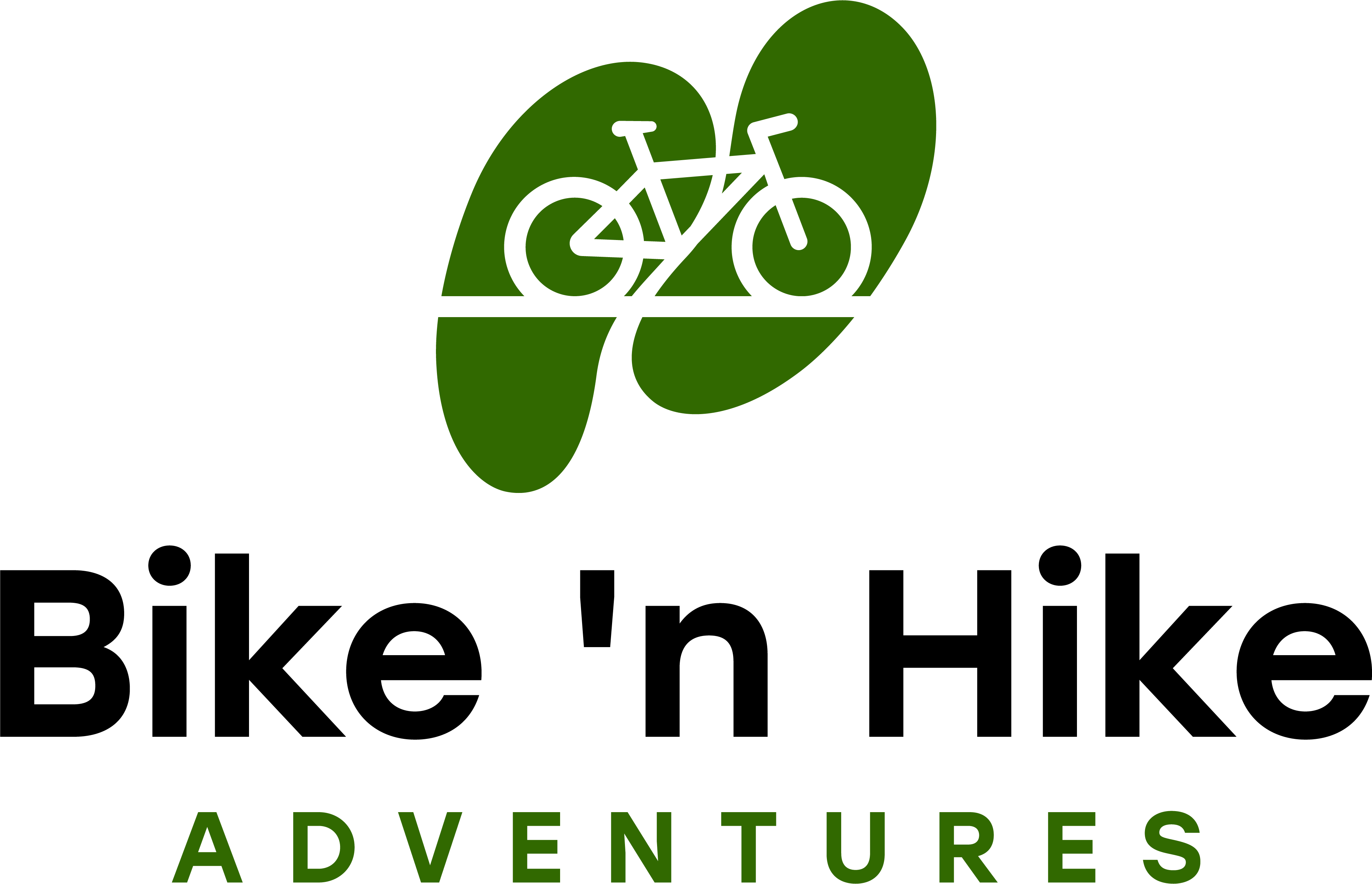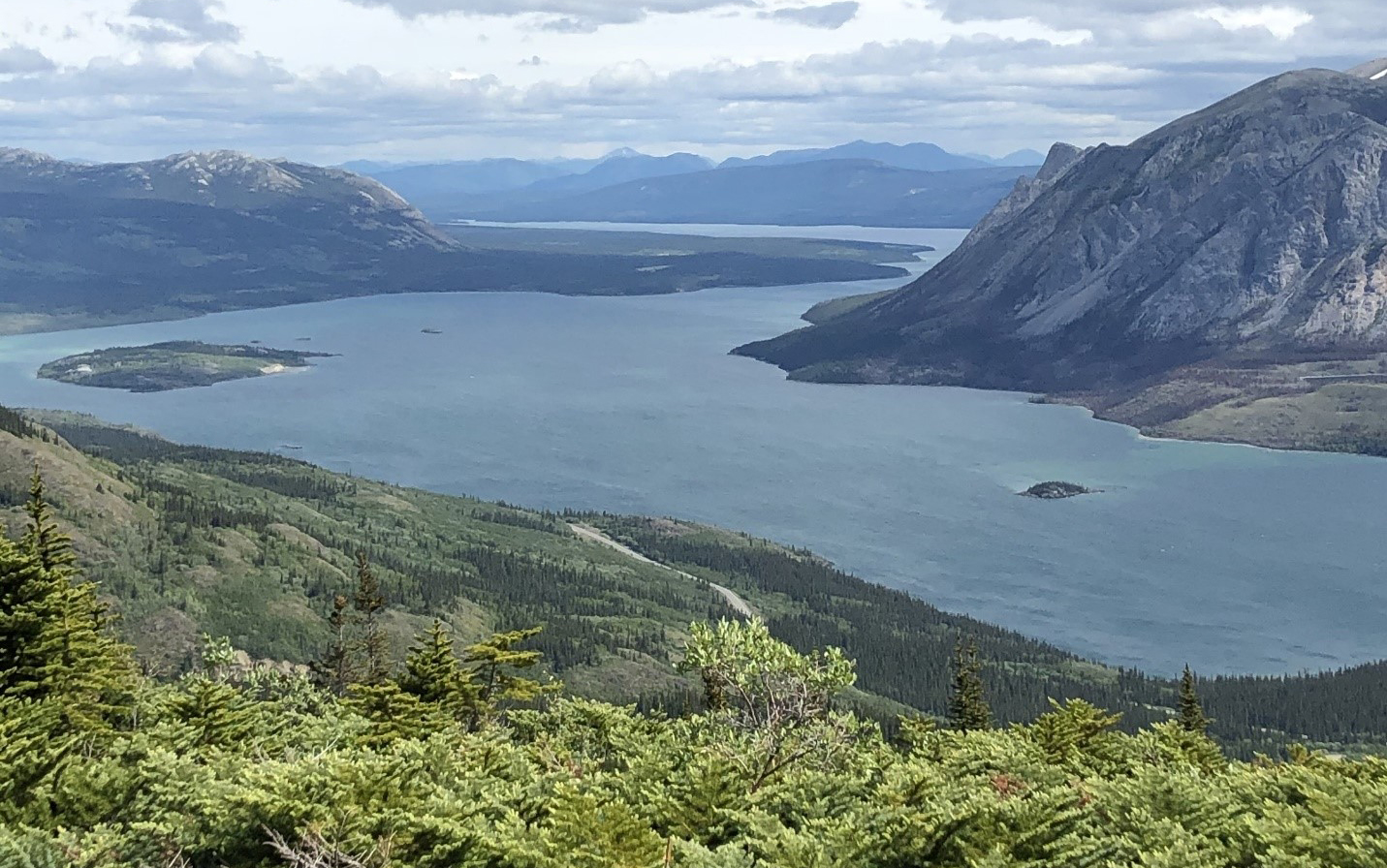
Yukon Hiking
I had the good fortune to be able to do a lot of hiking in Yukon in 2020. I am sure that year is stuck in your brain as it is in mine – that was Year 1 of Covid.
OFF TO WHITEHORSE
Late in 2019 I had arranged a work contract in Whitehorse, with the intention of staying a few months and exploring Canada’s north for the first time. I wanted to go in winter, as I had been told that there was really great cross-county skiing there, which I really enjoy. So I arrived in early February, eager to start working and ready for some adventure.
I had signed up to volunteer at Canada’s Winter Games, and I had signed up for a ski event called the Buckwheat International Ski Classic, held annually in Log Cabin, BC. I was ready to embrace the north, notwithstanding the -50C (-58F) temperatures of late January that year.
Sadly, Covid entered all our lives. The Games were shut down, the borders were closed, and everyone was afraid and worried.
However, I was lucky. I had a job, and I was in the safest place in Canada, where social distancing was a way of life.
Yukon is incredible. One of Canada’s territories, it is a vast and pristine area renowned for its breathtaking and rugged natural beauty. Over 80% of its landmass remains untouched and unspoiled, and untamed landscapes stretch as far as the eye can see. Yes, lots of social distancing is possible.
WHERE TO HIKE IN YUKON
So when I learned that I would be in Yukon for a while, I arranged to have some of my hiking gear shipped to me. While organized group activities were not allowed, people still wanted to get out to enjoy the natural environment and the better weather. What I learned was that people used a Facebook site to arrange outings. Great! I did not want to hike in Yukon on my own. This was bear county, there are cougars, mountain sheep, and lots of other wildlife. I was a city girl from the south and didn’t have enough training, and moreover the trails are not always obvious or well-marked. I was so happy that I found a way to explore with people who were experienced and knowledgeable.
Each week I eagerly perused the FB site to find out where people were going next. I was able to experience so many different hikes, meeting new people each time, and going with some regulars as well. Yukon is very welcoming – all you had to do was say “I want to come” and you had some people to go out with. There were local hikes (within an hour of Whitehorse) and some that were further away too. It was also easy to arrange a ride if you didn’t have a car.
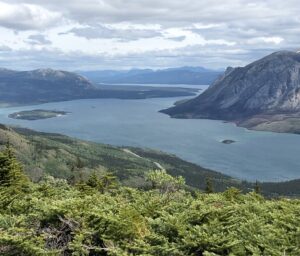
View from the Sam McGee Trail, one of my (many) favourite hikes
Yukon is such an interesting place, owing most of its fame to the short period of the Klondike Gold Rush from about 1896-1899. During this time, thousands of people from all over the world braved the hazardous Yukon River (and the infamous White Horse Rapids at Miles Canyon) and other challenges to seek their fortune near Dawson City. The Gold Rush pretty much ended by the early 1900’s as by that time the easily accessible gold deposits were exhausted. That’s not a long time. This massive influx of people required transportation, equipment and supplies to support them, leading to an economic boom in the territory. The Gold Rush played a crucial role in the territory’s historical and cultural identity. You can hike the Chilkoot Trail to get a taste of what these prospectors endured (minus the 12 months supplies they were supposed to bring with them as they headed to Dawson City). It was so difficult and treacherous at that time.
MILES CANYON
Miles Canyon was one of my favourite places to visit – it was close to where I lived and a great place for hiking, at any time. It is calm and beautiful now, but was a significant obstacle for prospectors traveling by boat to reach the goldfields. There is a wonderful painting of what the rapids looked like to them at the MacBride Museum in Whitehorse.

Miles Canyon in the spring/summer

Miles Canyon in the fall – lots of yellow

Miles Canyon in the winter
Yukon is also a place of surprises, at least for me. I expected it to be really cold all of the time. Yes, there were a few frigid days in the winter, but often the temperature hovered around -5 degrees C (41F). During an August trip to the Arctic Circle, I was struck by the profusion of wildflowers. I did not expect anything like that in Yukon.

Wildflowers growing near the Arctic Circle
As the year went on and it was clear that Covid would not be over soon, people came to visit me. It was possible, you just had to follow the entry rules. Hooray – more people to hike with. And, we could go further too.
SPECTACULAR SCENERY OUTSIDE WHITEHORSE – EVERYWHERE!
New destinations opened up for me – Dawson City, Tombstone Territorial Park, Haines Junction and the magnificent Kluane National Park.

Rainbow during a rainy hike to King’s Throne, Haines Junction

Short diversion to Five Finger Rapids along the way to Dawson City

View along the Grizzly Ridge, Tombstone

Oh wow – I can’t believe we saw 2 moose in Two Moose Lake, Tombstone!

Emerald Lake, near Carcross
All of Yukon is breathtaking. When you are driving, you can round a bend and be rewarded with another spectacular lake. You can’t pass a vista such as Emerald Lake, famous for its vibrant blue-green water, and not stop to stare and appreciate the beauty. There are mountains to ascend, including Canada’s highest peak, Mount Logan. The mighty Yukon River, one of the longest in North America, flows through the territory, a stunning waterway that offers opportunities for canoeing and kayaking. I took lessons in both! You can’t be in Yukon and ignore the outdoors. In the peak summer months, you can benefit from about 19 hours of daylight, which just makes you want to do more. You don’t get the intense heat that you might be used to in “the south”, which makes it more comfortable for hiking. In the winter months of course, you have the opposite – only about 5 hours of light. However, it is in these winter months that you have a higher likelihood of seeing the Northern Lights. Unfortunately, I didn’t get to see them, even though I was there for a year and I was diligently checking all my aurora apps.
Where else can my feet take me?
Where would you like to go?
Maybe we could go together?
3 highlights:
- The Yukon light – every day I saw different shades of blue and green – I wish I was an artist and could capture them
- The thrill of getting to the end of a hike, looking around, and seeing the incredible views all around you
- Long hiking days in the summer – who needs to sleep?!
3 things for the next time:
- Hike The Tors in the Kluane Region, with its impressive rock formations
- The Chilkoot Trail – the main trail used during the goldrush, with many remaining artifacts (mostly camping which I don’t love, but I only have to carry 1 backpack, not 12 months of supplies)
- Brave the infamous Dempster Highway again to experience more of the magnificent Tombstone trails
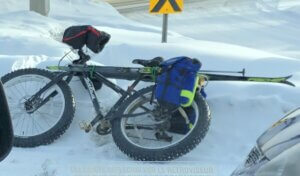
I had the good fortune to be able to do a lot of hiking in Yukon in 2020. I am sure that year is stuck in your brain as it is in mine – that was Year 1 of Covid.
OFF TO WHITEHORSE
Late in 2019 I had arranged a work contract in Whitehorse, with the intention of staying a few months and exploring Canada’s north for the first time. I wanted to go in winter, as I had been told that there was really great cross-county skiing there, which I really enjoy. So I arrived in early February, eager to start working and ready for some adventure.
I had signed up to volunteer at Canada’s Winter Games, and I had signed up for a ski event called the Buckwheat International Ski Classic, held annually in Log Cabin, BC. I was ready to embrace the north, notwithstanding the -50C (-58F) temperatures of late January that year.
Sadly, Covid entered all our lives. The Games were shut down, the borders were closed, and everyone was afraid and worried.
However, I was lucky. I had a job, and I was in the safest place in Canada, where social distancing was a way of life.
Yukon is incredible. One of Canada’s territories, it is a vast and pristine area renowned for its breathtaking and rugged natural beauty. Over 80% of its landmass remains untouched and unspoiled, and untamed landscapes stretch as far as the eye can see. Yes, lots of social distancing is possible.
WHERE TO HIKE IN YUKON
So when I learned that I would be in Yukon for a while, I arranged to have some of my hiking gear shipped to me. While organized group activities were not allowed, people still wanted to get out to enjoy the natural environment and the better weather. What I learned was that people used a Facebook site to arrange outings. Great! I did not want to hike in Yukon on my own. This was bear county, there are cougars, mountain sheep, and lots of other wildlife. I was a city girl from the south and didn’t have enough training, and moreover the trails are not always obvious or well-marked. I was so happy that I found a way to explore with people who were experienced and knowledgeable.
Each week I eagerly perused the FB site to find out where people were going next. I was able to experience so many different hikes, meeting new people each time, and going with some regulars as well. Yukon is very welcoming – all you had to do was say “I want to come” and you had some people to go out with. There were local hikes (within an hour of Whitehorse) and some that were further away too. It was also easy to arrange a ride if you didn’t have a car.
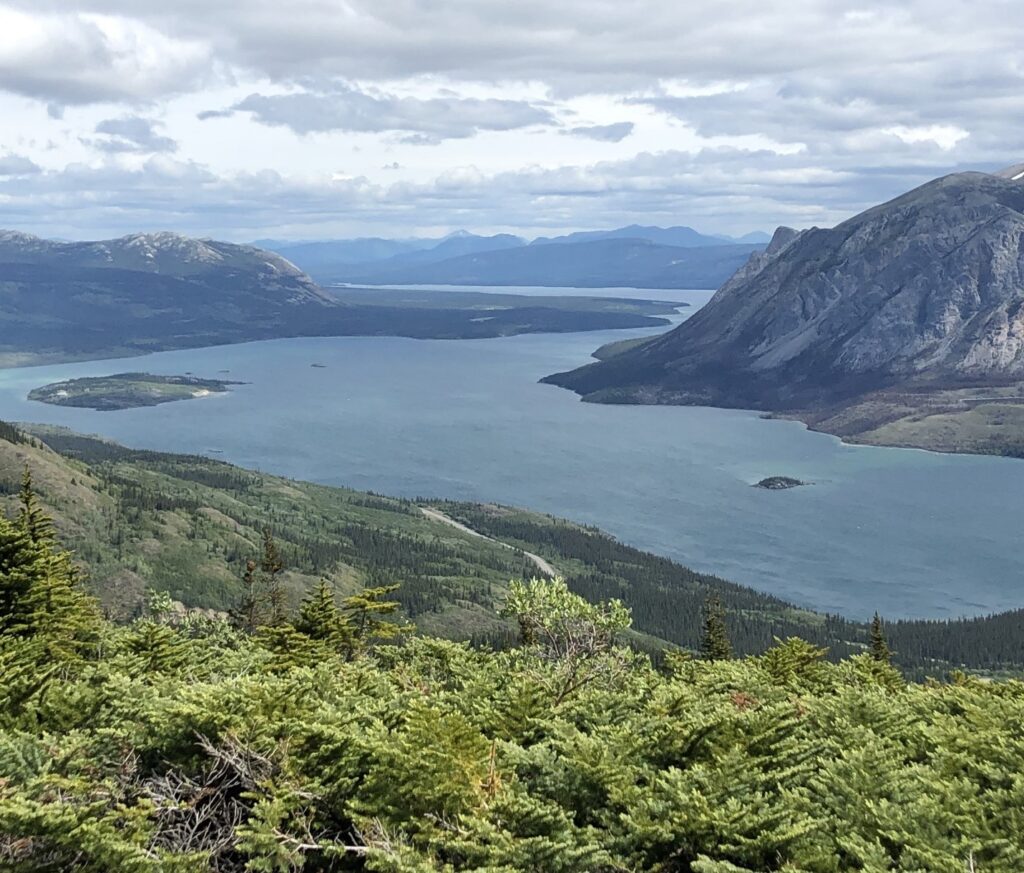
View from the Sam McGee Trail, one of my (many) favourite hikes
Yukon is such an interesting place, owing most of its fame to the short period of the Klondike Gold Rush from about 1896-1899. During this time, thousands of people from all over the world braved the hazardous Yukon River (and the infamous White Horse Rapids at Miles Canyon) and other challenges to seek their fortune near Dawson City. The Gold Rush pretty much ended by the early 1900’s as by that time the easily accessible gold deposits were exhausted. That’s not a long time. This massive influx of people required transportation, equipment and supplies to support them, leading to an economic boom in the territory. The Gold Rush played a crucial role in the territory’s historical and cultural identity. You can hike the Chilkoot Trail to get a taste of what these prospectors endured (minus the 12 months supplies they were supposed to bring with them as they headed to Dawson City). It was so difficult and treacherous at that time.
MILES CANYON
Miles Canyon was one of my favourite places to visit – it was close to where I lived and a great place for hiking, at any time. It is calm and beautiful now, but was a significant obstacle for prospectors traveling by boat to reach the goldfields. There is a wonderful painting of what the rapids looked like to them at the MacBride Museum in Whitehorse.
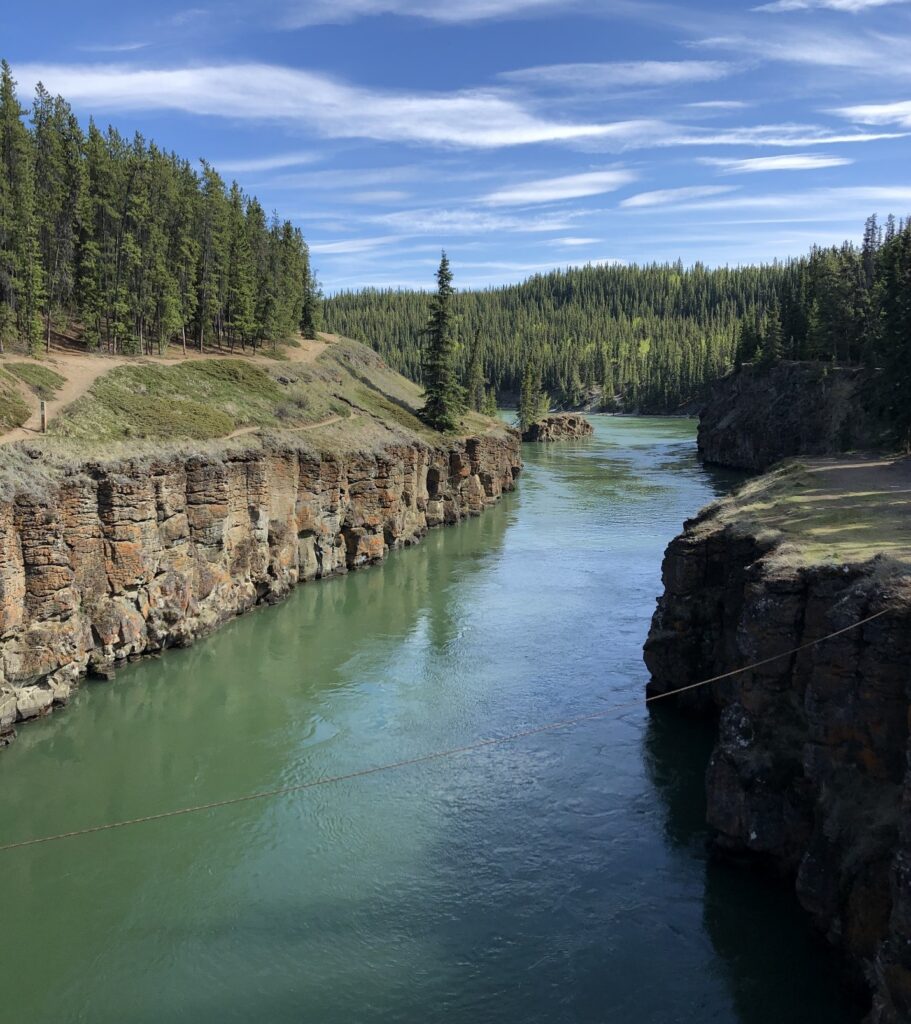
Miles Canyon in the spring/summer
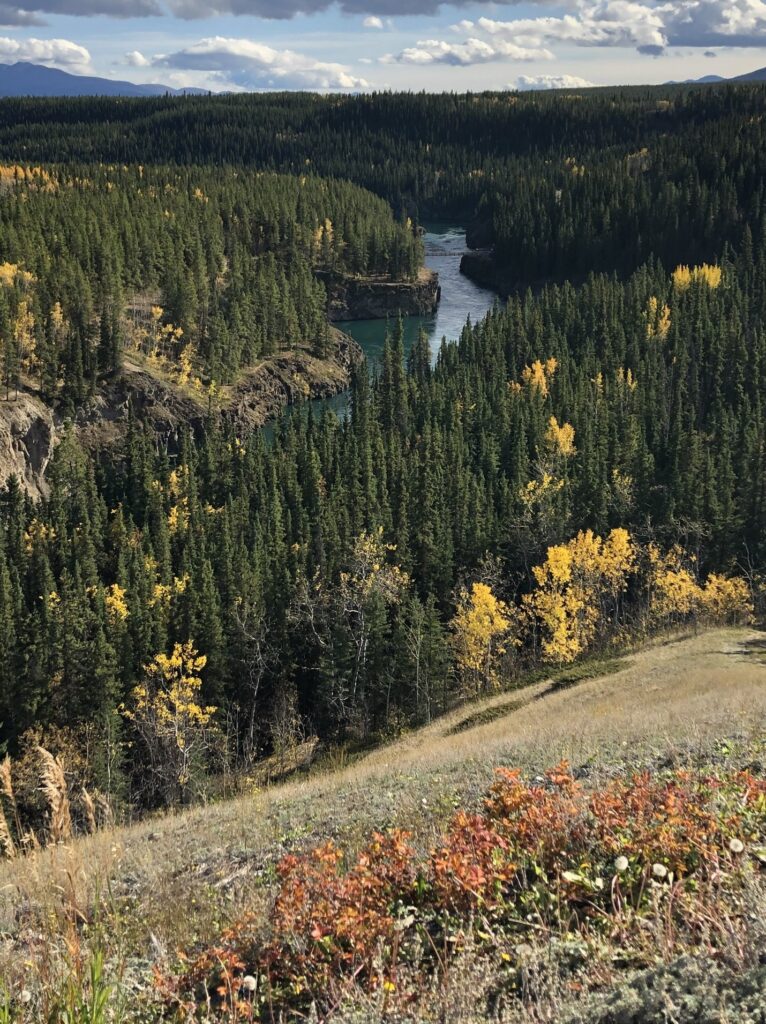
Miles Canyon in the fall – lots of yellow
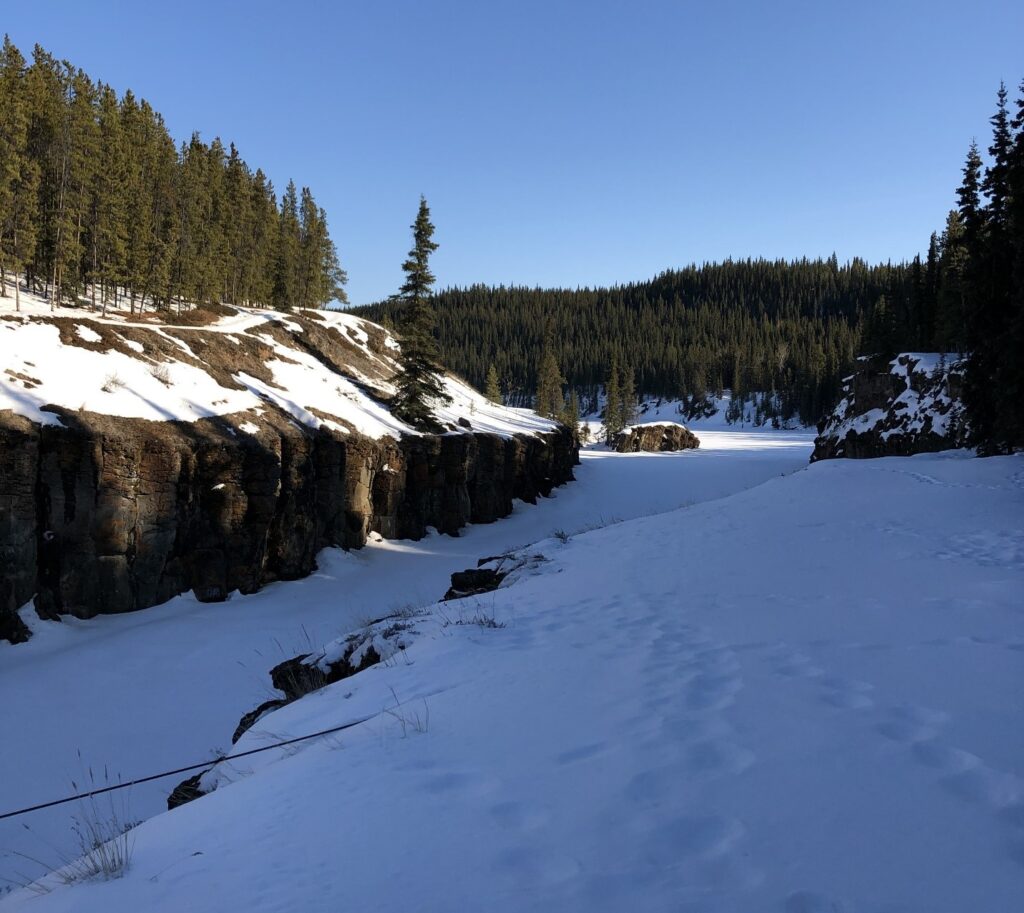
Miles Canyon in the winter
Yukon is also a place of surprises, at least for me. I expected it to be really cold all of the time. Yes, there were a few frigid days in the winter, but often the temperature hovered around -5 degrees C (41F). During an August trip to the Arctic Circle, I was struck by the profusion of wildflowers. I did not expect anything like that in Yukon.
As the year went on and it was clear that Covid would not be over soon, people came to visit me. It was possible, you just had to follow the entry rules. Hooray – more people to hike with. And, we could go further too.
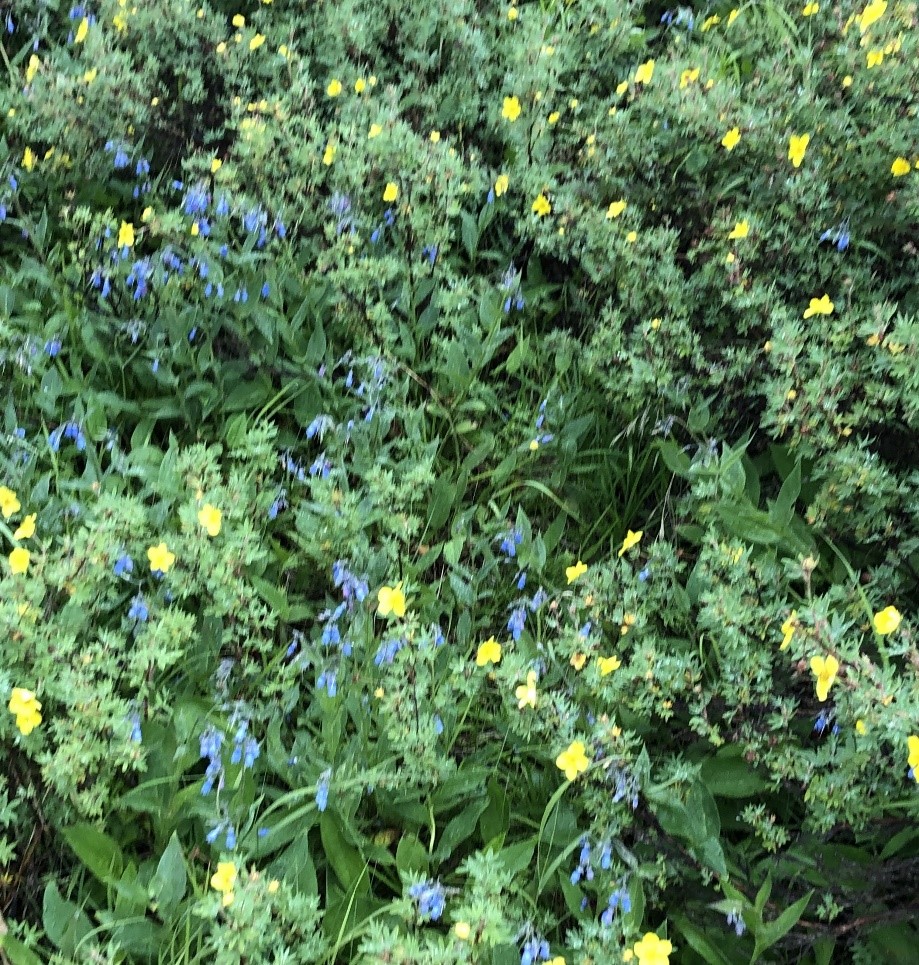
Wildflowers growing near the Arctic Circle
SPECTACULAR SCENERY OUTSIDE WHITEHORSE – EVERYWHERE!
New destinations opened up for me – Dawson City, Tombstone Territorial Park, Haines Junction and the magnificent Kluane National Park.
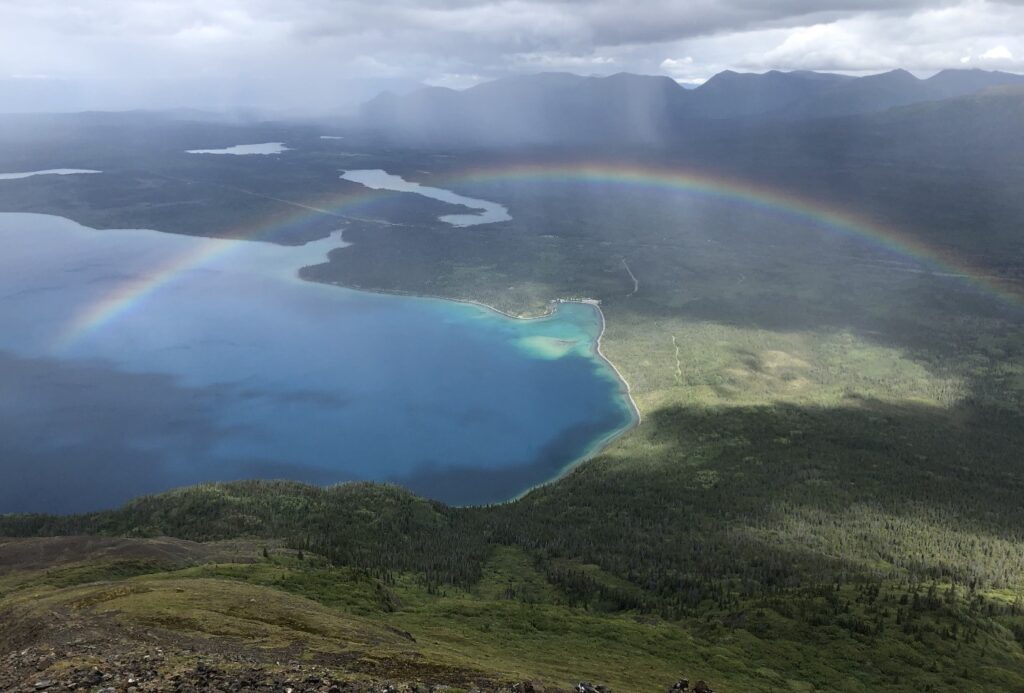
Rainbow during a rainy hike to King’s Throne, Haines Junction
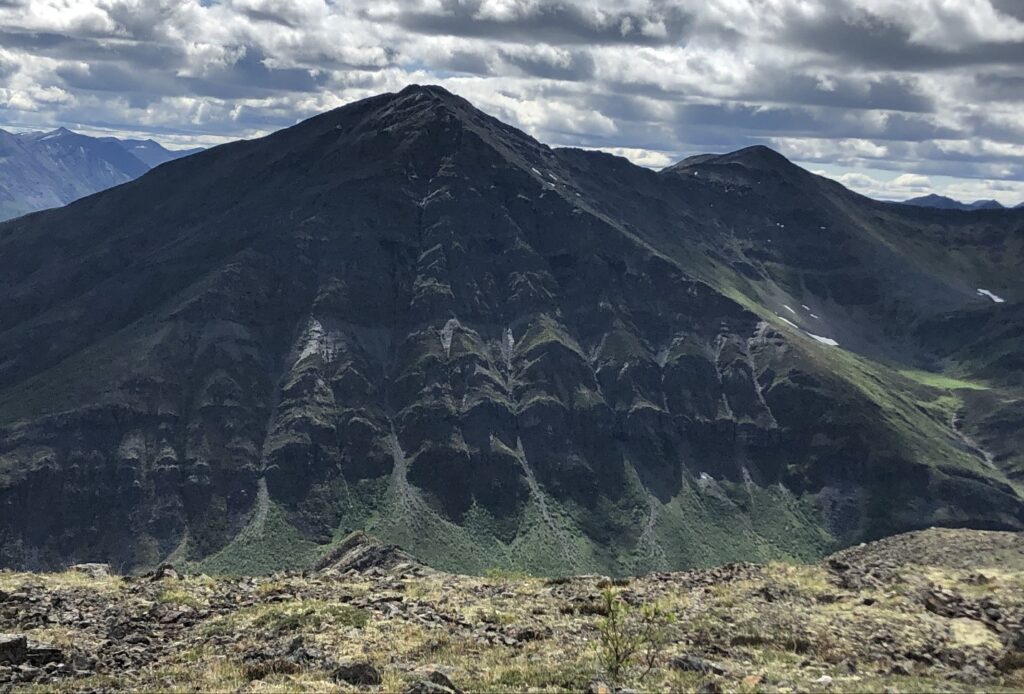
View along the Grizzly Ridge, Tombstone
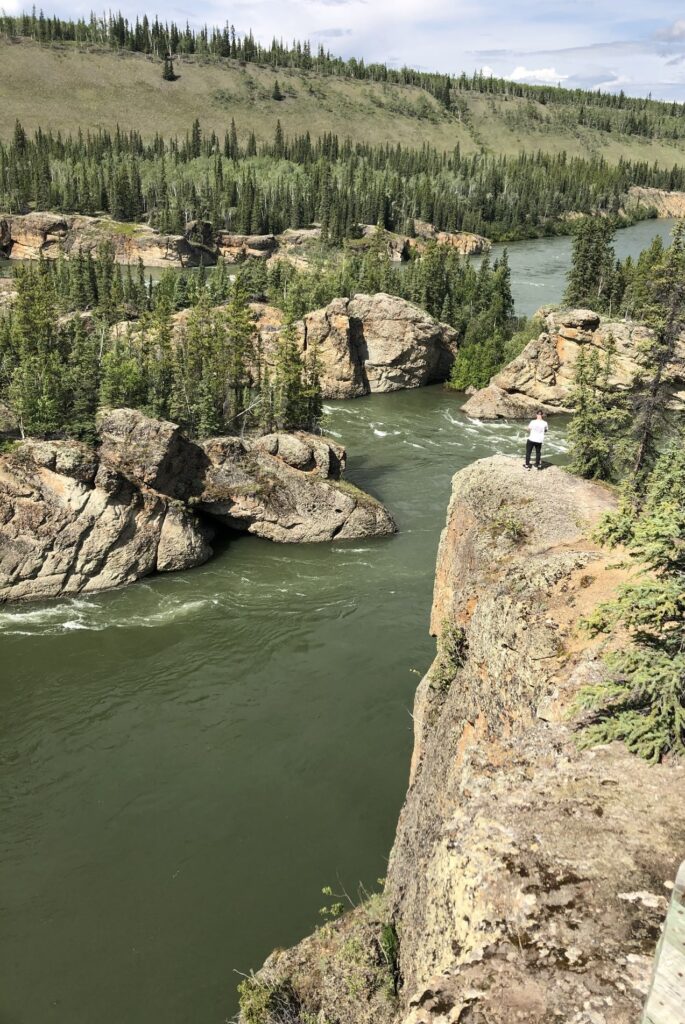
Short diversion to Five Finger Rapids along the way to Dawson City
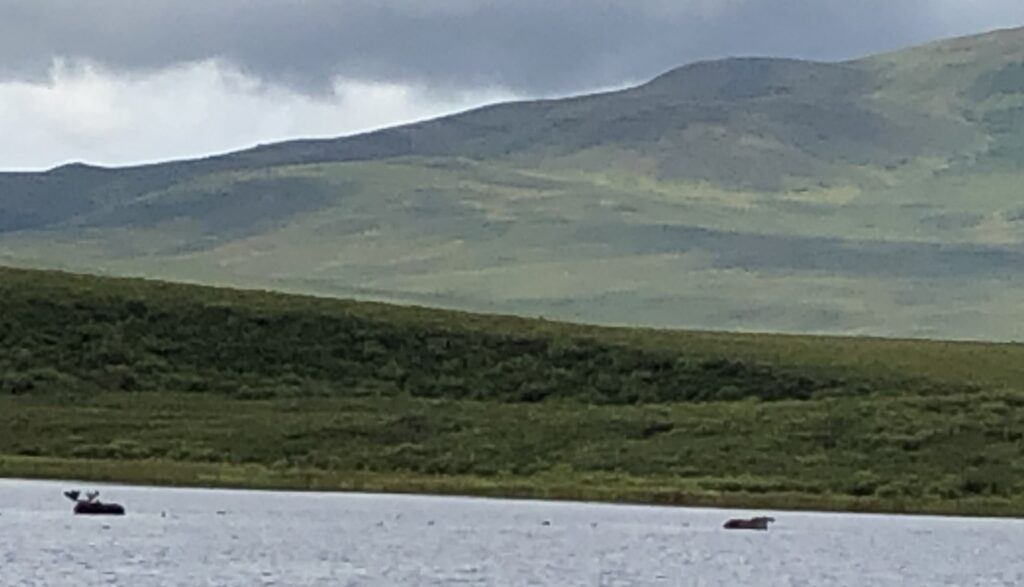
Oh wow – I can’t believe we saw 2 moose in Two Moose Lake, Tombstone!
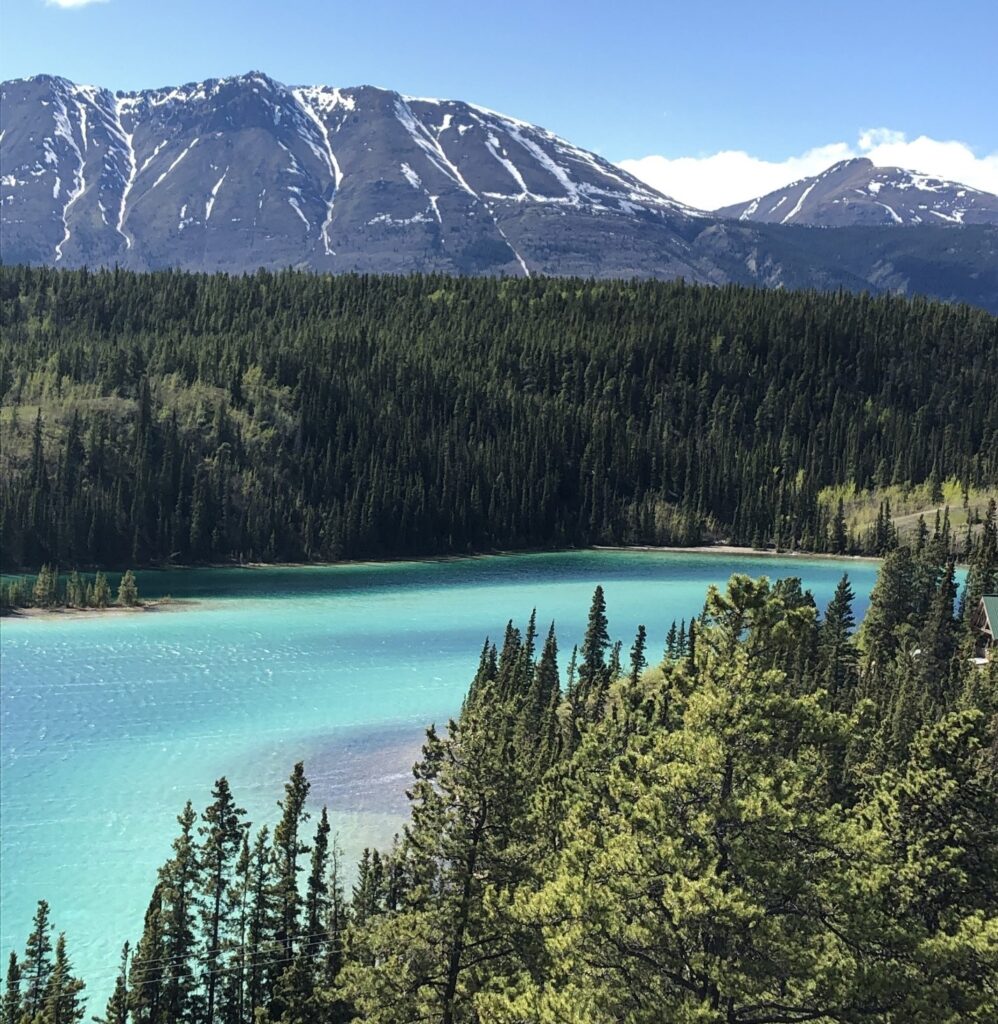
Emerald Lake, near Carcross
All of Yukon is breathtaking. When you are driving, you can round a bend and be rewarded with another spectacular lake. You can’t pass a vista such as Emerald Lake, famous for its vibrant blue-green water, and not stop to stare and appreciate the beauty. There are mountains to ascend, including Canada’s highest peak, Mount Logan. The mighty Yukon River, one of the longest in North America, flows through the territory, a stunning waterway that offers opportunities for canoeing and kayaking. I took lessons in both! You can’t be in Yukon and ignore the outdoors. In the peak summer months, you can benefit from about 19 hours of daylight, which just makes you want to do more. You don’t get the intense heat that you might be used to in “the south”, which makes it more comfortable for hiking. In the winter months of course, you have the opposite – only about 5 hours of light. However, it is in these winter months that you have a higher likelihood of seeing the Northern Lights. Unfortunately, I didn’t get to see them, even though I was there for a year and I was diligently checking all my aurora apps.
What does this mean? It means that I have to go back! No arm twisting required! So many hikes I did, so many waiting for another visit.
Where else can my feet take me?
Where would you like to go?
Maybe we could go together?
3 highlights:
- The Yukon light – every day I saw different shades of blue and pink – I wish I was an artist and could capture them
- The thrill of getting to the end of a hike, looking around, and seeing the incredible views all around you
- Long hiking days in the summer – who needs to sleep?!
3 things for the next time:
- Hike The Tors in the Kluane Region, with its impressive rock formations
- The Chilkoot Trail – the main trail used during the goldrush, with many remaining artifacts (mostly camping which I don’t love, but I only have to carry 1 backpack, not 12 months of supplies)
- Brave the infamous Dempster Highway again to experience more of the magnificent Tombstone trails

Recent Posts
Cycling Lake Constance
Art in Nature
Remember When Being Outside Was FUN?
All Categories

Yukon Hiking
I had the good fortune to be able to do a lot of hiking in Yukon in 2020. I am sure that year is stuck in your brain as it is in mine – that was Year 1 of Covid.
OFF TO WHITEHORSE
Late in 2019 I had arranged a work contract in Whitehorse, with the intention of staying a few months and exploring Canada’s north for the first time. I wanted to go in winter, as I had been told that there was really great cross-county skiing there, which I really enjoy. So I arrived in early February, eager to start working and ready for some adventure.
I had signed up to volunteer at Canada’s Winter Games, and I had signed up for a ski event called the Buckwheat International Ski Classic, held annually in Log Cabin, BC. I was ready to embrace the north, notwithstanding the -50C (-58F) temperatures of late January that year.
Sadly, Covid entered all our lives. The Games were shut down, the borders were closed, and everyone was afraid and worried.
However, I was lucky. I had a job, and I was in the safest place in Canada, where social distancing was a way of life.
Yukon is incredible. One of Canada’s territories, it is a vast and pristine area renowned for its breathtaking and rugged natural beauty. Over 80% of its landmass remains untouched and unspoiled, and untamed landscapes stretch as far as the eye can see. Yes, lots of social distancing is possible.
WHERE TO HIKE IN YUKON
So when I learned that I would be in Yukon for a while, I arranged to have some of my hiking gear shipped to me. While organized group activities were not allowed, people still wanted to get out to enjoy the natural environment and the better weather. What I learned was that people used a Facebook site to arrange outings. Great! I did not want to hike in Yukon on my own. This was bear county, there are cougars, mountain sheep, and lots of other wildlife. I was a city girl from the south and didn’t have enough training, and moreover the trails are not always obvious or well-marked. I was so happy that I found a way to explore with people who were experienced and knowledgeable.
Each week I eagerly perused the FB site to find out where people were going next. I was able to experience so many different hikes, meeting new people each time, and going with some regulars as well. Yukon is very welcoming – all you had to do was say “I want to come” and you had some people to go out with. There were local hikes (within an hour of Whitehorse) and some that were further away too. It was also easy to arrange a ride if you didn’t have a car.

View from the Sam McGee Trail, one of my (many) favourite hikes
Yukon is such an interesting place, owing most of its fame to the short period of the Klondike Gold Rush from about 1896-1899. During this time, thousands of people from all over the world braved the hazardous Yukon River (and the infamous White Horse Rapids at Miles Canyon) and other challenges to seek their fortune near Dawson City. The Gold Rush pretty much ended by the early 1900’s as by that time the easily accessible gold deposits were exhausted. That’s not a long time. This massive influx of people required transportation, equipment and supplies to support them, leading to an economic boom in the territory. The Gold Rush played a crucial role in the territory’s historical and cultural identity. You can hike the Chilkoot Trail to get a taste of what these prospectors endured (minus the 12 months supplies they were supposed to bring with them as they headed to Dawson City). It was so difficult and treacherous at that time.
MILES CANYON
Miles Canyon was one of my favourite places to visit – it was close to where I lived and a great place for hiking, at any time. It is calm and beautiful now, but was a significant obstacle for prospectors traveling by boat to reach the goldfields. There is a wonderful painting of what the rapids looked like to them at the MacBride Museum in Whitehorse.

Miles Canyon in the spring/summer

Miles Canyon in the fall – lots of yellow

Miles Canyon in the winter
Yukon is also a place of surprises, at least for me. I expected it to be really cold all of the time. Yes, there were a few frigid days in the winter, but often the temperature hovered around -5 degrees C (41F). During an August trip to the Arctic Circle, I was struck by the profusion of wildflowers. I did not expect anything like that in Yukon.

Wildflowers growing near the Arctic Circle
As the year went on and it was clear that Covid would not be over soon, people came to visit me. It was possible, you just had to follow the entry rules. Hooray – more people to hike with. And, we could go further too.
SPECTACULAR SCENERY OUTSIDE WHITEHORSE – EVERYWHERE!
New destinations opened up for me – Dawson City, Tombstone Territorial Park, Haines Junction and the magnificent Kluane National Park.

Rainbow during a rainy hike to King’s Throne, Haines Junction

Short diversion to Five Finger Rapids along the way to Dawson City

View along the Grizzly Ridge, Tombstone

Oh wow – I can’t believe we saw 2 moose in Two Moose Lake, Tombstone!

Emerald Lake, near Carcross
All of Yukon is breathtaking. When you are driving, you can round a bend and be rewarded with another spectacular lake. You can’t pass a vista such as Emerald Lake, famous for its vibrant blue-green water, and not stop to stare and appreciate the beauty. There are mountains to ascend, including Canada’s highest peak, Mount Logan. The mighty Yukon River, one of the longest in North America, flows through the territory, a stunning waterway that offers opportunities for canoeing and kayaking. I took lessons in both! You can’t be in Yukon and ignore the outdoors. In the peak summer months, you can benefit from about 19 hours of daylight, which just makes you want to do more. You don’t get the intense heat that you might be used to in “the south”, which makes it more comfortable for hiking. In the winter months of course, you have the opposite – only about 5 hours of light. However, it is in these winter months that you have a higher likelihood of seeing the Northern Lights. Unfortunately, I didn’t get to see them, even though I was there for a year and I was diligently checking all my aurora apps.
Where else can my feet take me?
Where would you like to go?
Maybe we could go together?
3 highlights:
- The Yukon light – every day I saw different shades of blue and green – I wish I was an artist and could capture them
- The thrill of getting to the end of a hike, looking around, and seeing the incredible views all around you
- Long hiking days in the summer – who needs to sleep?!
3 things for the next time:
- Hike The Tors in the Kluane Region, with its impressive rock formations
- The Chilkoot Trail – the main trail used during the goldrush, with many remaining artifacts (mostly camping which I don’t love, but I only have to carry 1 backpack, not 12 months of supplies)
- Brave the infamous Dempster Highway again to experience more of the magnificent Tombstone trails

I had the good fortune to be able to do a lot of hiking in Yukon in 2020. I am sure that year is stuck in your brain as it is in mine – that was Year 1 of Covid.
OFF TO WHITEHORSE
Late in 2019 I had arranged a work contract in Whitehorse, with the intention of staying a few months and exploring Canada’s north for the first time. I wanted to go in winter, as I had been told that there was really great cross-county skiing there, which I really enjoy. So I arrived in early February, eager to start working and ready for some adventure.
I had signed up to volunteer at Canada’s Winter Games, and I had signed up for a ski event called the Buckwheat International Ski Classic, held annually in Log Cabin, BC. I was ready to embrace the north, notwithstanding the -50C (-58F) temperatures of late January that year.
Sadly, Covid entered all our lives. The Games were shut down, the borders were closed, and everyone was afraid and worried.
However, I was lucky. I had a job, and I was in the safest place in Canada, where social distancing was a way of life.
Yukon is incredible. One of Canada’s territories, it is a vast and pristine area renowned for its breathtaking and rugged natural beauty. Over 80% of its landmass remains untouched and unspoiled, and untamed landscapes stretch as far as the eye can see. Yes, lots of social distancing is possible.
WHERE TO HIKE IN YUKON
So when I learned that I would be in Yukon for a while, I arranged to have some of my hiking gear shipped to me. While organized group activities were not allowed, people still wanted to get out to enjoy the natural environment and the better weather. What I learned was that people used a Facebook site to arrange outings. Great! I did not want to hike in Yukon on my own. This was bear county, there are cougars, mountain sheep, and lots of other wildlife. I was a city girl from the south and didn’t have enough training, and moreover the trails are not always obvious or well-marked. I was so happy that I found a way to explore with people who were experienced and knowledgeable.
Each week I eagerly perused the FB site to find out where people were going next. I was able to experience so many different hikes, meeting new people each time, and going with some regulars as well. Yukon is very welcoming – all you had to do was say “I want to come” and you had some people to go out with. There were local hikes (within an hour of Whitehorse) and some that were further away too. It was also easy to arrange a ride if you didn’t have a car.

View from the Sam McGee Trail, one of my (many) favourite hikes
Yukon is such an interesting place, owing most of its fame to the short period of the Klondike Gold Rush from about 1896-1899. During this time, thousands of people from all over the world braved the hazardous Yukon River (and the infamous White Horse Rapids at Miles Canyon) and other challenges to seek their fortune near Dawson City. The Gold Rush pretty much ended by the early 1900’s as by that time the easily accessible gold deposits were exhausted. That’s not a long time. This massive influx of people required transportation, equipment and supplies to support them, leading to an economic boom in the territory. The Gold Rush played a crucial role in the territory’s historical and cultural identity. You can hike the Chilkoot Trail to get a taste of what these prospectors endured (minus the 12 months supplies they were supposed to bring with them as they headed to Dawson City). It was so difficult and treacherous at that time.
MILES CANYON
Miles Canyon was one of my favourite places to visit – it was close to where I lived and a great place for hiking, at any time. It is calm and beautiful now, but was a significant obstacle for prospectors traveling by boat to reach the goldfields. There is a wonderful painting of what the rapids looked like to them at the MacBride Museum in Whitehorse.

Miles Canyon in the spring/summer

Miles Canyon in the fall – lots of yellow

Miles Canyon in the winter
Yukon is also a place of surprises, at least for me. I expected it to be really cold all of the time. Yes, there were a few frigid days in the winter, but often the temperature hovered around -5 degrees C (41F). During an August trip to the Arctic Circle, I was struck by the profusion of wildflowers. I did not expect anything like that in Yukon.
As the year went on and it was clear that Covid would not be over soon, people came to visit me. It was possible, you just had to follow the entry rules. Hooray – more people to hike with. And, we could go further too.

Wildflowers growing near the Arctic Circle
SPECTACULAR SCENERY OUTSIDE WHITEHORSE – EVERYWHERE!
New destinations opened up for me – Dawson City, Tombstone Territorial Park, Haines Junction and the magnificent Kluane National Park.

Rainbow during a rainy hike to King’s Throne, Haines Junction

View along the Grizzly Ridge, Tombstone

Short diversion to Five Finger Rapids along the way to Dawson City

Oh wow – I can’t believe we saw 2 moose in Two Moose Lake, Tombstone!

Emerald Lake, near Carcross
All of Yukon is breathtaking. When you are driving, you can round a bend and be rewarded with another spectacular lake. You can’t pass a vista such as Emerald Lake, famous for its vibrant blue-green water, and not stop to stare and appreciate the beauty. There are mountains to ascend, including Canada’s highest peak, Mount Logan. The mighty Yukon River, one of the longest in North America, flows through the territory, a stunning waterway that offers opportunities for canoeing and kayaking. I took lessons in both! You can’t be in Yukon and ignore the outdoors. In the peak summer months, you can benefit from about 19 hours of daylight, which just makes you want to do more. You don’t get the intense heat that you might be used to in “the south”, which makes it more comfortable for hiking. In the winter months of course, you have the opposite – only about 5 hours of light. However, it is in these winter months that you have a higher likelihood of seeing the Northern Lights. Unfortunately, I didn’t get to see them, even though I was there for a year and I was diligently checking all my aurora apps.
What does this mean? It means that I have to go back! No arm twisting required! So many hikes I did, so many waiting for another visit.
Where else can my feet take me?
Where would you like to go?
Maybe we could go together?
3 highlights:
- The Yukon light – every day I saw different shades of blue and pink – I wish I was an artist and could capture them
- The thrill of getting to the end of a hike, looking around, and seeing the incredible views all around you
- Long hiking days in the summer – who needs to sleep?!
3 things for the next time:
- Hike The Tors in the Kluane Region, with its impressive rock formations
- The Chilkoot Trail – the main trail used during the goldrush, with many remaining artifacts (mostly camping which I don’t love, but I only have to carry 1 backpack, not 12 months of supplies)
- Brave the infamous Dempster Highway again to experience more of the magnificent Tombstone trails

